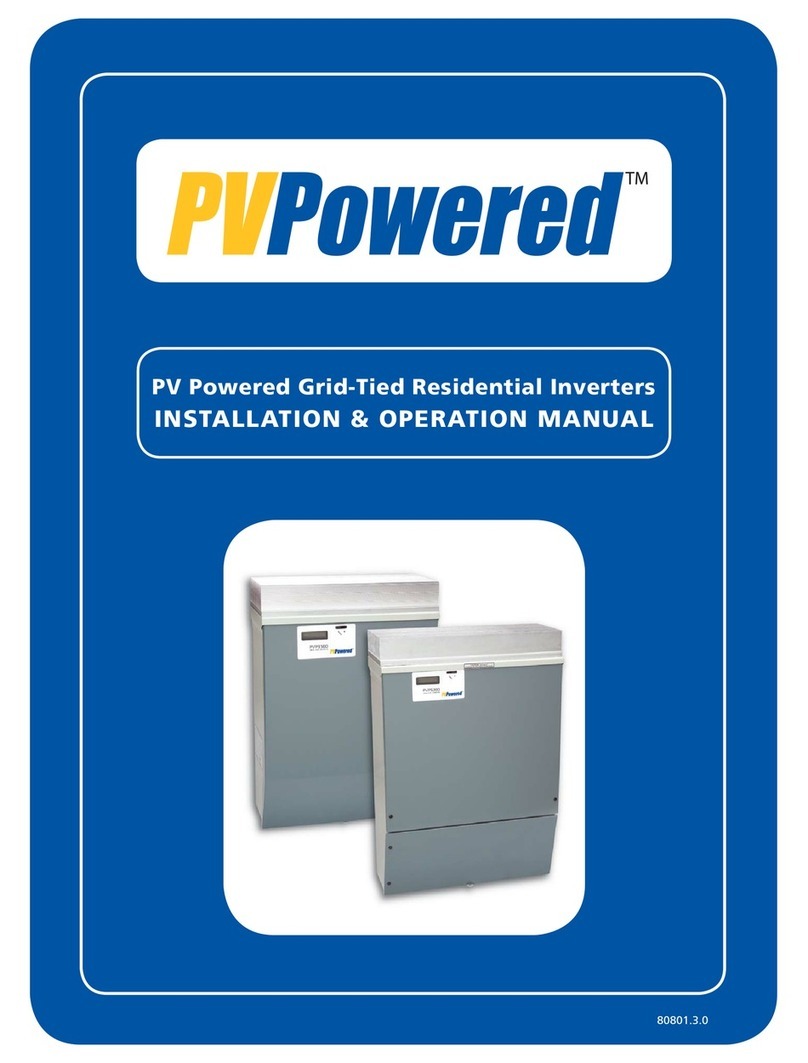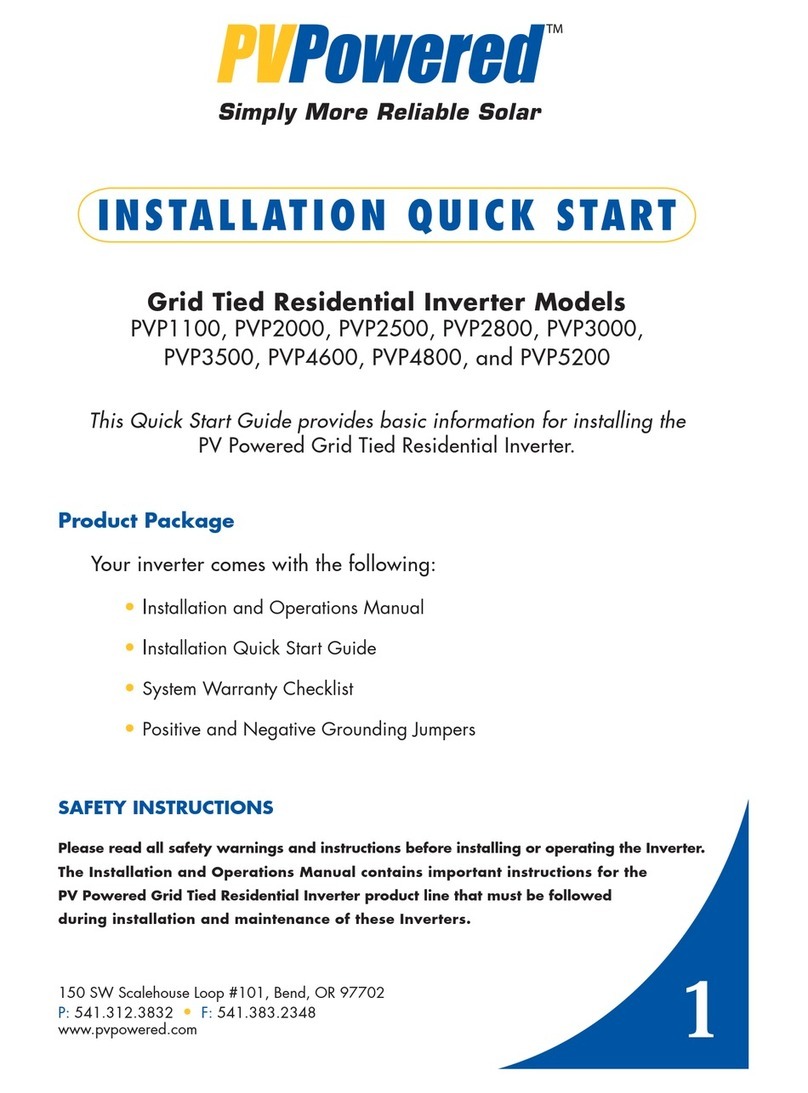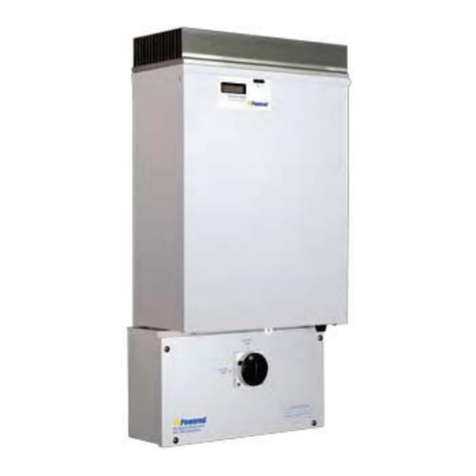
PV Powered LLC 3 11-18-28-704
1.0 INTRODUCTION
The PV Powered StarInverter is a utility interactive inverter for photovoltaic (PV) systems.
The StarInverter is tied to an electrical source provided by the local utility company (i.e.
on-grid), as well as to the photovoltaic system. The StarInverter contains everything
needed to convert the DC voltage generated by the solar arrays into the AC voltage
required to power a house. Because the inverter is tied to a local utility source, if a
house’s electrical needs exceed the power generated by the solar arrays, the house
automatically taps into its local power supply for that additional electricity. Likewise, if a
house does not utilize all the power generated by the solar panels, the inverter actually
reverses the flow of electricity (i.e. electricity is fed back into the grid). Think of it as
accumulating credits of electricity with the utility for future use.
The information contained within this manual will provide all the information necessary for
successful installation and use of the StarInverter.
Product Features
Command Center Software
Revolutionary software developed by
PV Powered establishes a new industry
standard for ease of use. Monitor the
status and efficiency of energy
generated by the PV system on screen
and in real time.
Easy Installation
The custom designed mounting
brackets and easy-to-follow
instructions make installation simple
and quick.
Figure 1: PVP Command Center
Simple, Innovative Design
Everything needed to power up the StarInverter is contained within the inverter
box, including AC and DC connections and circuits. Low part count keeps costs
down and simplifies the installation and troubleshooting processes.
Safety Features
The StarInverter is designed for safety. Control power comes from the utility grid,
ensuring that power can never be generated during a utility grid failure. The
output stage transformer guarantees isolation of the utility grid and PV modules.
Expandability
The StarInverter is designed with growth in mind, from residential to commercial
use. Most PV system configurations can be accommodated.
System Flexibility
There are three connection options available with the StarInverter. These options
vary depending on your model. See Figures 2 and 3. Refer to your local utility
provider for specific connection requirements per regulations.

































